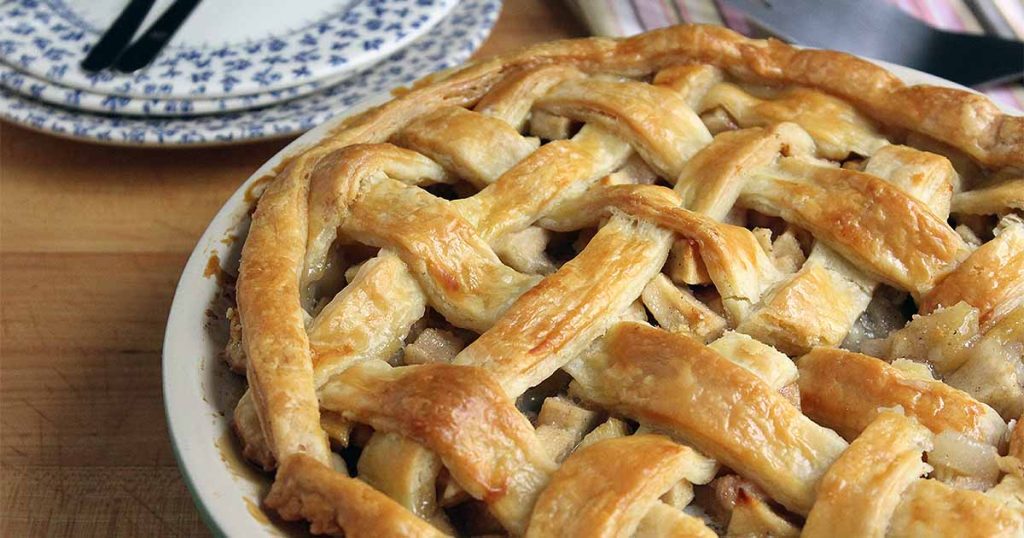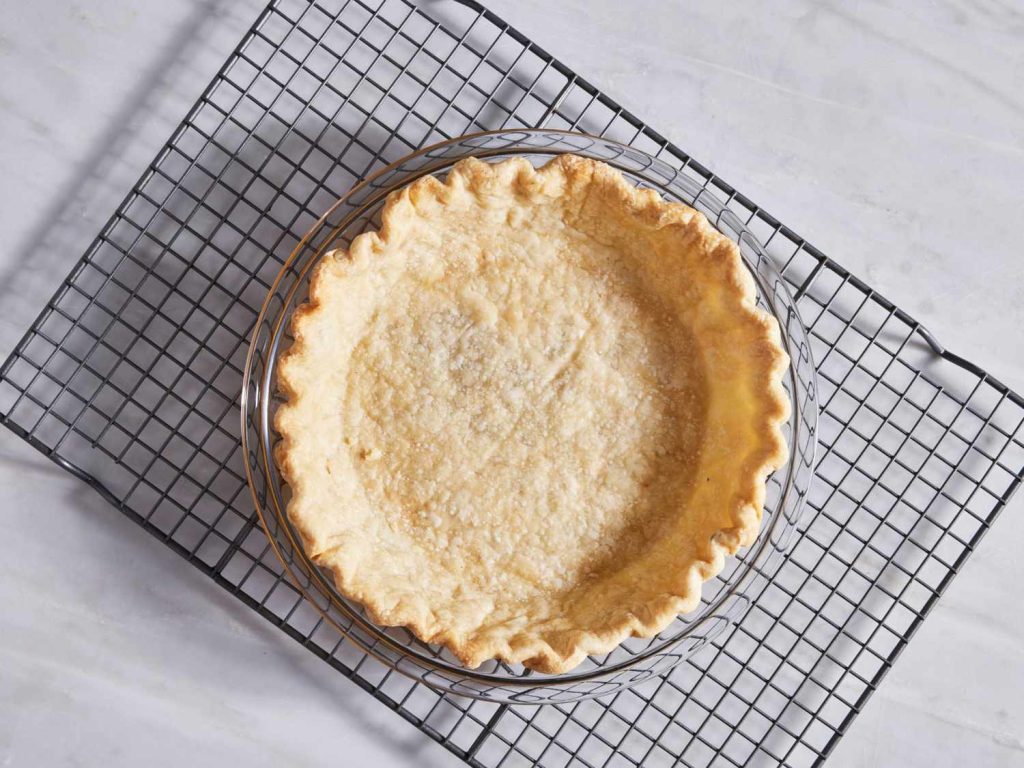Making a pie crust from scratch is an art that has been passed down for generations. But it can be difficult to find the perfect combination of ingredients that will give you the best balance of flavor and texture. One question many bakers have is whether or not they can use bread flour to make pie crust. Let’s take a look at what bread flour is and how it affects the texture of your pie crust.

Table of Contents
What Is Bread Flour?
Bread flour is a high-gluten, high-protein flour made from hard wheat, which gives bread its chewy texture and structure.
It has more protein than all-purpose flour, which means it absorbs more liquid and produces more gluten when mixed with water.
This makes bread dough stretchier and more elastic than dough made with all-purpose flour, resulting in denser bread with a chewy texture.
How Does Bread Flour Affect Pie Crust?
Using bread flour for pie crust can create a much denser, chewier crust compared to one made with all-purpose flour. However, this may not be desirable if you are looking for a light and flaky crust. Additionally, since bread flour contains more protein than all-purpose flour, it also requires more fat (such as butter or shortening) to prevent the gluten strands from becoming too tough or dense when baked.
Can You Use Bread Flour for Pie Crust?
Bread flour is not typically recommended for use in pastries, such as pies.
This is because bread flour has a higher gluten content than all-purpose flour and this extra gluten can make the dough tough and difficult to work with when making a delicate crust.
Additionally, the high protein content of bread flour can create a dense texture that does not result in the light and flaky crust desired when making pies.
Instead, it is preferable to use all-purpose flour for pie crusts as it has a lower gluten content and provides the right amount of structure and flexibility for creating the perfect pastry.
When using all-purpose flour for making a pie crust, it is important to follow the recipe closely and use very cold ingredients such as butter, water, or shortening. This is because the temperature will affect how much gluten develops and can impact the texture of the crust.
Additionally, using a food processor to mix together the dough can also help to reduce the amount of time that you need to knead it by hand and prevent over-mixing.
Finally, remember to always chill the dough before rolling it out to prevent overworking and creating a tough crust.
FAQs
Can I use cake flour for the pie crust?
Cake flour is typically used for cakes and other desserts due to its low gluten content.
While this may make it suitable for a cake, it is not the best option for pie crusts because of the high amount of butter typically used in them.
Pie crusts require a higher gluten content than cake flour can provide, making all-purpose flour the better choice for creating a flaky and tender crust.
In general, it is best to use all-purpose flour when making pie dough. The combination of low gluten content from cake flour and high butter content in most pie recipes can produce an overly crumbly texture that does not hold up well. For a delicious, flaky dough that won’t fall apart when cut, stick to all-purpose flour for your pie dough.
When baking pies at home, it is important to use the right type of flour for the best results. Although cake flour can be a tempting option due to its low gluten content, it is not suitable for pie crusts because of the high amount of butter typically used in them.
All-purpose flour is the best choice for making pie dough as it has a high enough gluten content to create a flaky and tender crust that will hold up when cut into slices. By choosing the right type of flour, you can enjoy delicious pies with perfect texture every time!
Read more:
Can You Use Bleached Flour for Sourdough Starter?
Can you make a pie crust with self-rising flour?
Yes, it is possible to make a pie crust with self-rising flour.
However, you should be aware that using this type of flour may result in a slightly different texture or taste than when using all-purpose flour.
This is because the self-rising variety contains baking powder and salt, both of which can affect the flavor and texture. To ensure a successful outcome, it is important to follow the recipe closely and make adjustments as necessary.
Additionally, self-rising flour tends to produce a tougher crust so you may want to use less of this type of flour or reduce the amount of kneading time. With careful attention and appropriate adjustments, it is possible to make a delicious pie crust using self-rising flour.

Conclusion
In conclusion, while you can use bread flour to make pie crust, it is generally not recommended unless you’re looking for a very dense and chewy crust. Since bread flour has more protein than all-purpose flour, it would require more fat such as butter or shortening in order to produce an ideal texture when baked. Ultimately, using all-purpose flour should provide you with the best results for your homemade pies!
References:








